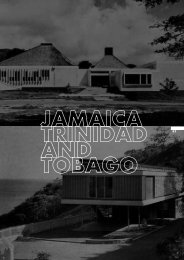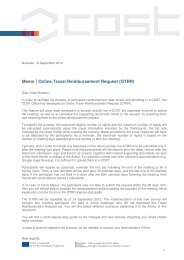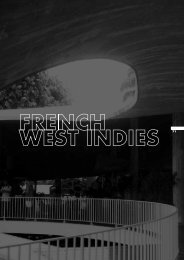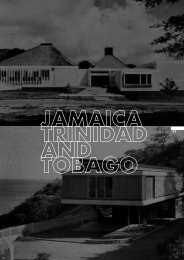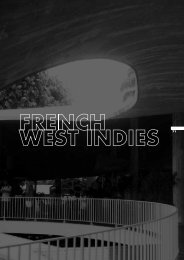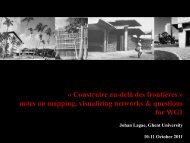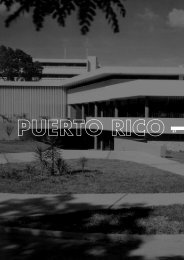PANJIM BETWEEN THE PAST AND MODERNITY
PANJIM BETWEEN THE PAST AND MODERNITY
PANJIM BETWEEN THE PAST AND MODERNITY
Create successful ePaper yourself
Turn your PDF publications into a flip-book with our unique Google optimized e-Paper software.
70 | ARTIGOSda primeira, designada por Praça do Pelourinho.Todas as construções consideradas importanteseram mantidas e a malha urbana adaptava-se a elas.Era também mantida parte do enfiamento constituídopelas ruas da Conceição e da Saudade, regularizadonas áreas em que estas “tocavam” na malha urbanaplaneada. A Rua Velha desaparecia, assim comotodas as construções que a ladeavam.A queda do Marquês de Pombal em 1777, a faltade vontade e de poder de Lisboa face à populaçãolocal e ao governo de Goa e a constante discussãoem torno da problemática da localização da novacapital, foram certamente importantes contributospara o abandono do plano para Pangim e dos planosefectuados em 1775 e 1777 para a velha cidadede Goa. Assim, e perante a indefi nição geral, ocrescimento de Pangim acabou por fazer-se sobretudona zona das Fontainhas 8 e na direcção da fozdo Mandovi onde se iam fi xando alguns serviços.Em 1811, a Alfândega mudou-se para Pangim 9 enos anos seguintes transferiram-se defi nitivamentegrande parte dos principais serviços da administraçãocolonial. 10 Ao mesmo tempo eram demolidose/ou deixados ao abandono 11 alguns dos mais relevantesedifícios da cidade de Velha Goa, mostrandoque a passagem da capital para Pangim era umadecisão sem retorno.Existem poucos relatos de obras realizadas nos cinquentaanos que separam o plano de 1776 do governode D. Manuel de Portugal e Castro (1826-1835),último vice-rei da Índia, para além das mudançasdos serviços públicos que se instalaram na suamaioria em edifícios pré-existentes 12 , todos situadosa norte do esteiro das Fontainhas.Não se sabe porque é que a população deixou dese fi xar na Rua Velha e se passou a instalar nasFontainhas. Poderá ter sido por causa das obrasque se iniciavam na zona central? Ou por causada grande epidemia que abalou Pangim em 1781? 13Pode este movimento da população ter acontecidosomente depois das obras iniciadas no governo deD. Manuel? Pela documentação analisada não sepode ter a certeza, mas tudo indica que tenha sidoefectivamente D. Manuel o responsável pela maioriadestes trabalhos. Chegaram até nós testemunhosde obras de urbanização importantes executadaspara melhorar as condições higiénicas de Pangimcomo as detalhadamente descritas por ManuelLouzada Azevedo. 14 Foram aterrados os três grandescampos de arroz e duas linhas de água quemuch importance, as they were obviously poorerconstructions. Also, in the Panjim area, particularlyalong Rua Velha, diverse buildings were alsomarked that were referred to as “of little interest”.All the buildings identifi ed were private houses,with the exception of the Governor’s palace and theCavalry Company barracks, located in the extremenorth of Fontainhas. The existing streets were highlighted– the street that is now Dr. Dada VaidyaRoad 7 , which linked the north of Fontainhas andSanta Inês, skirting the swamps at the foot of thehill, and Rua Velha, which crossed the swamps andthe paddy fi elds. Two or three other streets werealso marked, but these have since disappeared dueto subsquent works.The fi rst known plan for the urbanisation of Panjimwas carried out in March 1776 (Fig. 3), by the samesergeant Antas Machado. It provided for an ortogonalgrid that was to extend between two river armswhich were perpendicular to the Mandovi, at thefoot of an hill to the south and southeast. Landfi lland levelling work would be carried out in thewhole Panjim area, and the riverbank zones wouldbe defi ned by a waterfront road from the north ofFontainhas to Santa Inês. The plan also foresaw amilitary type square next to the river and anothersquare behind this one, which was given the namePraça do Pelourinho. All existing structures consideredimportant were kept and the urban grid wasadapted to them. Part of the thoroughfare madeup of Rua da Conceição and Rua da Saudade wasalso maintained, it being “regularised” in the areaswhere it met the new planned urban grid. RuaVelha was to disappear, with all the buildings oneither side of it.The fall of the Marquis of Pombal in 1777, thelack of interest and power in Lisbon in relation tothe local population and the government of Goa,and the constant discussion of the question of thelocation of the new capital certainly contributedsignifi cantly to the abandonment of the plan forPanjim as well as of the plans drawn up in 1775 and1777 for the old city of Goa. Hence, given the lackof defi nition, the growth of Panjim ended up beingconcentrated in the area of Fontainhas 8 and westtowards the Mandovi’s mouth, where some Stateservices gradually located.The Customs moved to Panjim in 1811 9 and, in thefollowing years, a large part of the main colonialadministration departments followed 10 . At the sameMURPHY 2 | Julho 2007Pangim entre o Passado e a Modernidade



